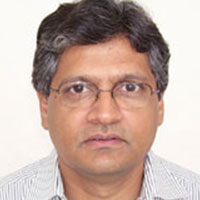Criticism of the National Food Security Bill has led to the government dropping the idea of issuing an Ordinance and instead, saying it would try to get the Bill passed in a special session of Parliament. This article addresses some of the key questions raised by critics of the Bill.
Doubts persist about the whole idea underlying the National Food Security Bill (NFSB). Is it not extravagant to subsidise food for such a large part of the population when the poor constitute only 30% of the population? Can a poor country afford such spending? Isn’t the Food Bill just corruption by another name? Wouldn’t the Bill lead to a virtual takeover of the grain trade by the Central Government? As a rising tide lifts all boats, should we not invest in growth rather than spend on consumption?
These are all good questions and we will attempt to answer them. In a nutshell, we think that the Bill is neither just populist nor unaffordable. However, we believe that some of the anxiety over the cost, corruption and the government’s ever-increasing role in the grain market stems from the assumption that the Public Distribution System (PDS) will remain forever the main vehicle of delivering the food subsidy. We think that if the government develops the necessary infrastructure (for example, Unique Identification (UID) linked bank accounts) states will be encouraged to switch to cash transfers. The extra costs of government storage and distribution will then be saved and the problems caused by the distortion of the grain trade will be mitigated. Many of the worries that arise from the identification of the Food Bill with the PDS will disappear.
Cash transfers versus PDS
We contend that the Right to Food campaign is right to stress the need for a food subsidy with near universal coverage but is wrong in its visceral opposition to cash transfers. The result is a Food Bill written wholly in terms of an expansion of the PDS. Suggestions for reforms such as cash transfers and the use of biometric identification have been shunted to an obscure chapter despite the fact that the Delhi government has already opted for delivering the food subsidy through cash transfers. Anyone who had a cursory look at the Food Bill tends to assume that the Bill is just expanding the present PDS and thereby worsening the existing problems of leakage, corruption and high costs of storage and distribution. This makes people antagonistic toward the whole idea of the Food Bill. The opposition of the Right to Food campaign to even experiment with cash transfers has harmed the poor by making people sympathetic to the critics of the Food Bill.
Cash transfers are often opposed on the grounds of paternalism. “If we give cash to the poor, they might blow it on frivolous things. If we give them food, they will be better nourished”. This can work as an argument for mid-day meals but not as a justification for PDS, which is nothing but an income transfer. First, the malnourished in India lack the nutrition that comes from a diversified diet; inducing them to eat more food grains would be barking up the wrong tree. Second, even if one wanted to, PDS would not do it. PDS gives only a fraction of the amount of food grains typically consumed. As a result, the effect of the subsidy is that households save the money that would have otherwise been used to buy food at market prices. The savings is an income transfer and that is the reason grain consumption under PDS would be no different than under cash transfers. The critics who point out that the effort to make the poor eat more food grains is misguided are quite right. However, that is not the purpose of the Food Bill; it is only an income transfer the amount of which is defined in terms of food grains.
Food Bill and inclusive growth
Why is such an income transfer necessary? Because about 90% of India’s labour force makes a living in the informal sector – farms, firms, and shops employing no more than 10 people. These are generally low productivity activities that use primitive technology and little electric power. On the other hand, the engine of growth since the reforms of 1991 has been the formal sector – especially, the skill intensive sectors like software services, pharmaceuticals, telecom and others. These sectors, however, created little employment for unskilled workers, which is why poverty has not declined faster.
For inclusive growth, we need to invest in education and skills and remove constraints to the absorption of labour by the formal sector. But we also need to improve productivity in the informal sector. Indeed, it is not possible to have an inclusive growth without productivity improvements in the informal sector, and these depend very much on the human capital and access to credit. Any financial assistance to the poor that gives them some flexibility in managing their affairs helps improve the productivity of their time. A parent can use it to feed her children better or to get them medical help or to supplement school expenses. A marginal farmer can use the extra cash to buy inputs that he would otherwise have to forgo. What looks like consumption also works as investment.
The widened coverage is welcome
But if ‘the poor’ are only the bottom third or so, why offer food subsidy to the bottom two thirds of the country? We often talk about the poor as if it is a well-defined group but that is hardly the case. The official poverty threshold is low. Many of the people above the threshold are also poor and look just like the people below the threshold. As a result, there is no reliable way in which subsidies can be targeted only to the people below the official threshold. Our experience with targeted subsidies has taught us that many of the truly deprived are left out which, of course, defeats the purpose. The widened coverage of the Bill is, therefore to be welcomed.
Not affordable?
Finally, there is the question of costs. The official projections are that it would cost close to 1.5% of GDP. This is a lot of money. However, even in the most pessimistic scenario, Indian GDP is expected to grow at 5% per annum in the near future. If we think of the fact that the Bill will cost less than one third of the growth in the national income next year, it does not seem that unaffordable, especially given its value to millions who will receive it.
Concluding thoughts
Much of India is poor enough to lead extremely stressful and anxiety-ridden lives. Such stress extinguishes hope and kindles anger. Any relief that we can offer to the millions in this situation can only raise aspirations. It will create and not destroy incentives to work and be more productive. However, lest the Food Act become just another token of concern for the poor, the government must expend some effort in reforming the PDS. The centre cannot and should not force any state to adopt a particular system of delivering the food subsidy - whether cash or kind, but it should not hesitate in encouraging the states who wish to move toward cash transfers to do so.
A version of this article has appeared in Economic Times.




 19 June, 2013
19 June, 2013 






Comments will be held for moderation. Your contact information will not be made public.